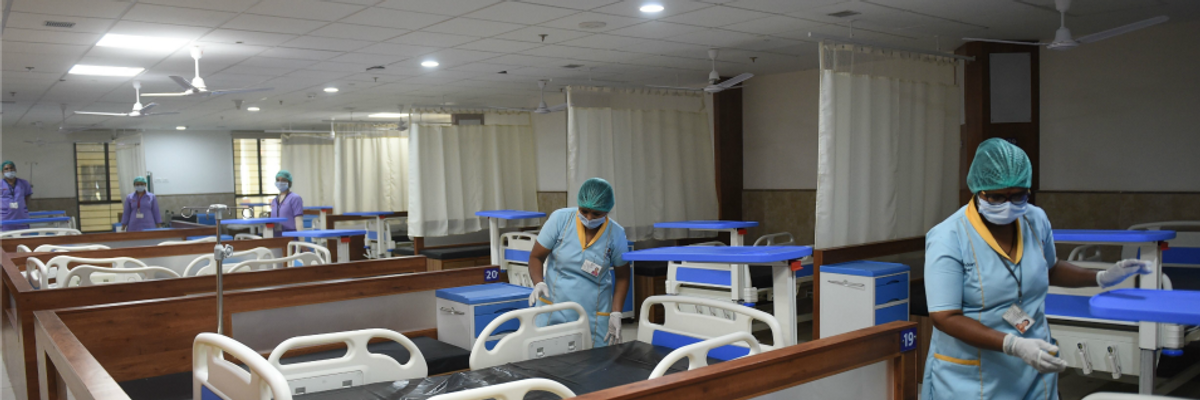The coronavirus which originated late last year in Wuhan, China and has infected tens of thousands of people so far could eventually spread to 60% of the world population, a prominent health expert in Hong Kong warned Tuesday.
In a New York Times op-ed Monday, Dr. Gabriel Leung wrote that he was meeting with the World Health Organization (WHO) to discuss the spread of the virus, which experts have officially called CoViD-19.
"We need to get a clear view of the contagion and plug the holes in our understanding of the disease to inform public health decisions that affect hundreds of millions of lives," wrote Leung. "Science has a critical role to play in restoring calm."
"If there is anything the coronavirus reminds us, it's that a global threat anywhere is a global threat everywhere."
--Liz Schrayer, U.S. Global Leadership Coalition
The respiratory disease has so far infected more than 40,000 people in total, with only about 400 cases in countries outside China. Two people have died of the disease in countries other than China, in the Philippines and Hong Kong. By Monday, more than 1,000 people in China had died of the disease. At least 12 people in the U.S. have been diagnosed with the coronavirus, according to the CDC.
Leung told The Guardian Tuesday that WHO must take stock of the emergency measures that China has taken in recent weeks since the virus originated in the city of Wuhan in Hubei province, and determine whether they are working.
Late last month, Chinese officials ordered a lockdown of Wuhan which then was expanded to all of Hubei province, barricading 50 million people in the province's borders. Health officials have been going from house to house in Wuhan, taking residents' temperatures, rounding up those who show signs of the coronavirus, and quarantining the sick in makeshift hospitals that have been constructed in stadiums and exhibition centers.
"Let's assume that they have worked. But how long can you close schools for? How long can you lock down an entire city for? How long can you keep people away from shopping malls? And if you remove those [restrictions], then is it all going to come right back and rage again? So those are very real questions," Leung told the outlet.
The global health community may have "another unpalatable truth to face" if the lockdown has not worked, reported Sarah Boseley in The Guardian: "that the coronavirus might not be possible to contain."
"Then the world will have to switch tracks: instead of trying to contain the virus, it will have to work to mitigate its effects," Boseley wrote.
The current rate of infection outside China could be the "tip of the iceberg," Leung told The Guardian.
The rate of transmission of the virus is 60 to 80%, with infected patients spreading the disease to more than two people. Health experts are still trying to determine if the virus is spread through airborne particles or through coughing.
WHO is emphasizing in its guidance that the risk of contracting coronavirus is very low for people outside China, with the seasonal flu posing a greater threat. According to the New York Times, the rate of new infections in China outside Hubei province has declined as of Tuesday.
In the U.S., Democratic lawmakers slammed the Trump administration Monday after it announced it would slash funding to global health programs by 34%. The cuts would eliminate about $3 billion from the State Department and U.S. Agency for International Development (USAID)'s budgets.
"It's like a unilateral, willing surrender to pandemic disease," tweeted Sen. Chris Murphy (D-Conn.).
"If there is anything the coronavirus reminds us, it's that a global threat anywhere is a global threat everywhere," U.S. Global Leadership Coalition President Liz Schrayer toldForeign Policy.
Writing in the Times, Leung expressed hope that "the science being urgently coordinated will also fight the crisis on other fronts," warning against travel restrictions like the one imposed by the Trump administration late last month.
"It could help roll back some measures seemingly fueled by populism and nativism," he wrote. "The travel advisories, outright travel bans, immigration controls, and xenophobic treatment of people from different places are doing significant harm. The goal is to stay at least a couple of steps ahead of the epidemic curve."

